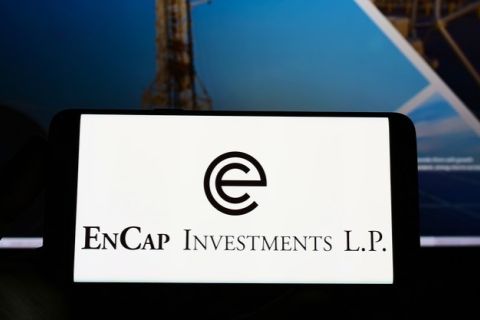
Young engineers provide a great resource to companies; they are eager to learn and absorb information quickly.
Finding young talent
Young engineers provide a great resource to companies; they are eager to learn and absorb information quickly. The downside is that this younger generation is not being trained as its predecessors. In earlier times, the oil and gas industry provided the necessary training and resources that would allow engineers to gain valuable field experience as staff engineers prior to working their way to management positions. Prior to the 1980s, the larger E&P companies had long-term development programs that were predicated upon extensive training. These training programs likely lasted two or more years and required extensive work in the field and on-the-job training. But as pressure on capital budgets increased during a time of lower oil prices, many staff training programs were shortened; the time and cost for supporting the extensive training dwindled until it was nearly non-existent.

The comparison between the original well design and the current well design shows the improvements made by engineers in the training program.
(Charts courtesy of Swift Energy Co.)
To combat the lack of talent and manpower, many independents used consultants to avoid the cost and overhead of a training program or full-time employees. While the cost benefits seem desirable, in the long run, the talent pool is not being developed and when consultants retire, they leave a greater gap in experience than the previous generation. The only true answer to the shortage problem is to determine a way to develop a talent pool from which the industry can draw but that adds flexibility to the economics of the industry.
Historically, the problem lies in two main areas: college recruiting and recruiting talent with zero to five years’ experience. During the college recruiting process, there are several hurdles that mid-sized companies face:
• While the college recruiting process remains a strong avenue for sourcing new young talent, large companies often are at the forefront of these engineers’ minds, leaving little room for mid-sized companies to create a connection;
• Many graduates enter fierce competition for a limited number of jobs with the majors and others whose corporate image is strong in the engineering world;
• The costs associated with training programs can amount to hundreds of thousands of dollars. Large companies often have years-long rotational training programs. Companies hope that these investments pay off, but more often, independents recruit these trained employees from the larger companies; and
• Mid-sized firms are left to recruit or compete for trained engineers from the larger companies.

An improvement in drilling performance was made over a period of one year after the VMVB program was implemented in 4Q 2009.
Mentoring breeds teamwork
Swift Energy Co. has brought young and experienced engineers together in a mentor environment where performance results are expected from the mentor/mentee duo. The company has taken the traditional idea of a consultant to a new level by applying it to young engineers.
The Vision, Mission, Values, and Behavior (VMVB) program is the operating philosophy upon which the work program is built. One of the driving factors of the program is to push performance toward that of a Top Tier company. This drive comes from the company’s vision. Benchmarks, goals, and performance measures all stem from the company’s mission statement, and the focus of the training program is heavily derived from the values and behavior.
The VMVB program works because of the proper selection of candidates provided by a good sourcing partner – a company that has a strong network of young engineers. One key component of this program is that young engineers are brought on as contractors. They are not full-time employees. Thus, a company such as Hamilton Group is needed to bring in and pay the engineers as contractors.
This idea can be hard to grasp by graduates, as the majority of them believe they need a full-time “regular” job. Hamilton Group differs from a conventional staffing/recruiting agency in that the company has developed strong personal relationships with engineers, and is focused on an ultimate goal of moving them forward on a career path with the parent company.

It is understood that being a field engineer within the company’s drilling program means that this now is a lifestyle.
Swift mandates that the field engineers act as a team; they are required to communicate at all times outside of their own project. It is understood that being a field engineer within the company’s drilling program means that this now is a lifestyle. The engineer is required to remain in constant contact with their project, even on days off.
The ultimate goal for the field engineer is to progress by virtue of experience into a well-rounded, field-trained engineer who is ready to move to the next level in his or her career. A critical part of the program involves the detailed evaluation of both participants.
Evaluation of the field engineer is just as critical as the field engineer’s evaluation of the rig-site supervisor. This purposeful creation of constructive tension between the mentor and mentee is what has driven the performance higher and higher in the company’s drilling program.
The value created by pairing drilling supervisors with field engineers comes in a number of ways:
• Swift has observed that placing the engineer in the field allows the company to apply and provide onsite engineering personnel;
• The engineer captures lessons learned and reports these together with concurrent operations in the End of Well Report, allowing the efficiencies of applying lessons learned to be realized immediately;
• Capturing, analyzing, and reporting critical data are enhanced by the engineering discipline;
• The field engineer functions as a “performance engineer,” adding quality assurance to the operation;
• Having the engineer on the rig raises the bar and the performance of the rig-site supervisor by his presence and need to teach the engineer. Once the supervisor assumes the role of teacher, overall performance of the rig is enhanced; and
Having this much talent in the workforce allows for a pipeline of field-tested personnel into the Swift organization.
Swift believes value is created by balancing the roles and relationships of the employee and the consultant. The company has used the relatively inexperienced talent that often has little or no field experience in a progressive manner and has found that lack of experience is not a crutch, but an opportunity that can help benefit the company’s bottom line.
Looking forward
As of Sept. 1, 2010, Swift has begun the process of implementing the work program in the production side of its business. Swift sees that many potential benefits can be transferred laterally to the production side and has even considered rotating young engineers between the production and drilling programs.
This cost-saving measure allows the company to keep young engineers in training for a longer period of time, which results in a well-rounded, experienced engineer who can work between both groups. This possibly could create value-added recommendations that begin with the drilling team and carry through to the production team.
Recommended Reading
Enough! Consumers Say They’re Overserved on Energy Transition, EY Finds
2024-02-11 - Two thirds of energy consumers are unwilling to spend more time and money to be sustainable, Ernst & Young reported.
Bunge, Chevron Announce FID on Oilseed Processing Plant
2024-03-05 - Bunge Chevron Ag Renewables' facility will be used to manufacture low carbon renewable fuels from oilseed.
Trace Carbon Solutions Applies for First Phase of Class VI Wells at Evergreen Hub
2024-03-12 - Trace is applying for its subsidiary Evergreen Sequestration Hub to be allowed to permanently sequester CO2 in underground geological formations in Louisiana.
EnCap Launches Bildmore to Invest in Hard-to-finance Clean Energy
2024-03-11 - In an effort to support hard-to-finance clean energy projects, EnCap Energy Transition Fund is launching Bildmore, a platform expected to invest in up to 15 third-party battery storage, solar and other energy transition projects per year.
Avangrid to Build its Fifth Wind Farm in Illinois
2024-03-12 - Osagrove Flats, the 153 MW wind farm, will bring Avangrid’s renewable energy capacity in Illinois to nearly 800 MW.





